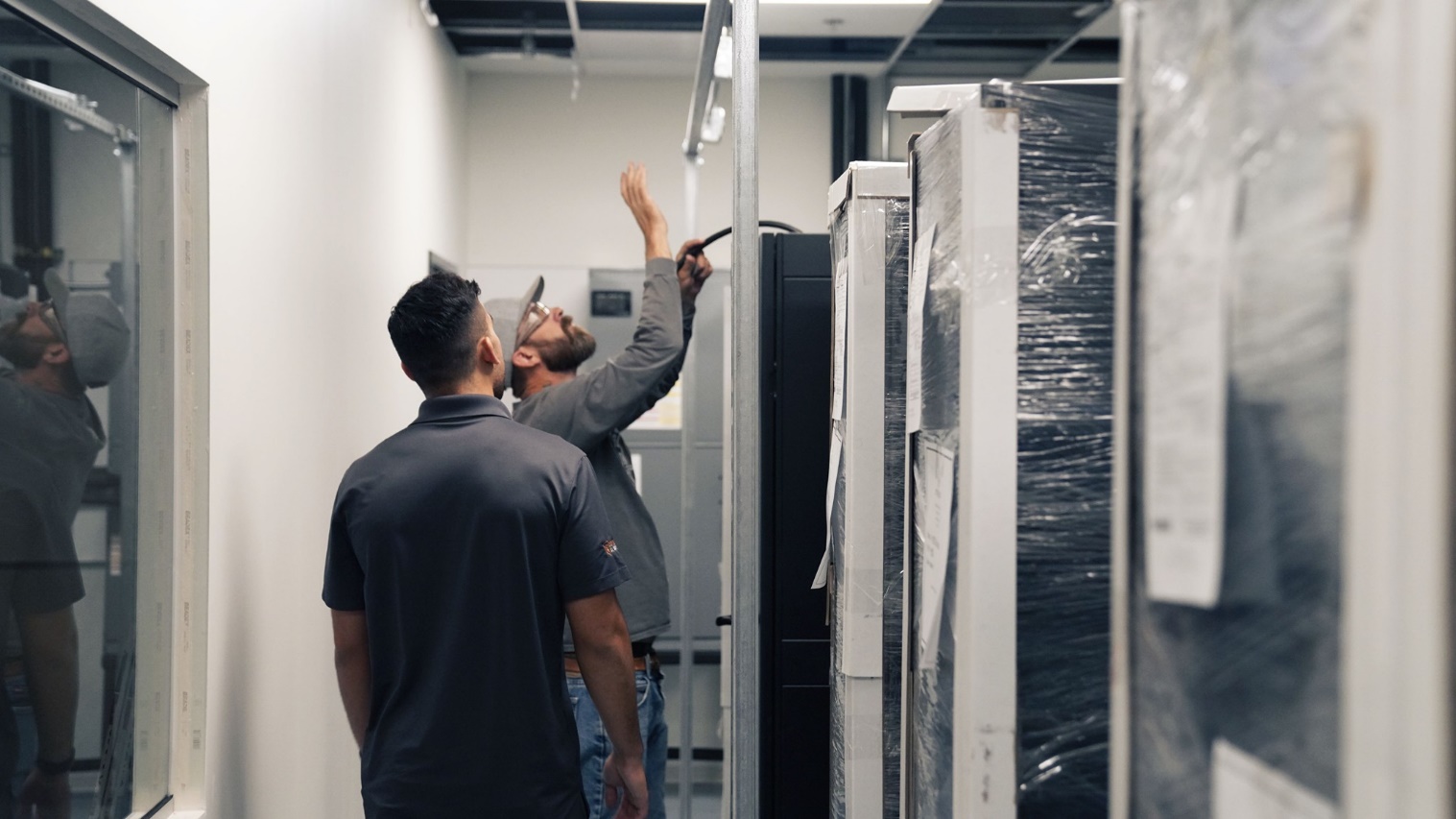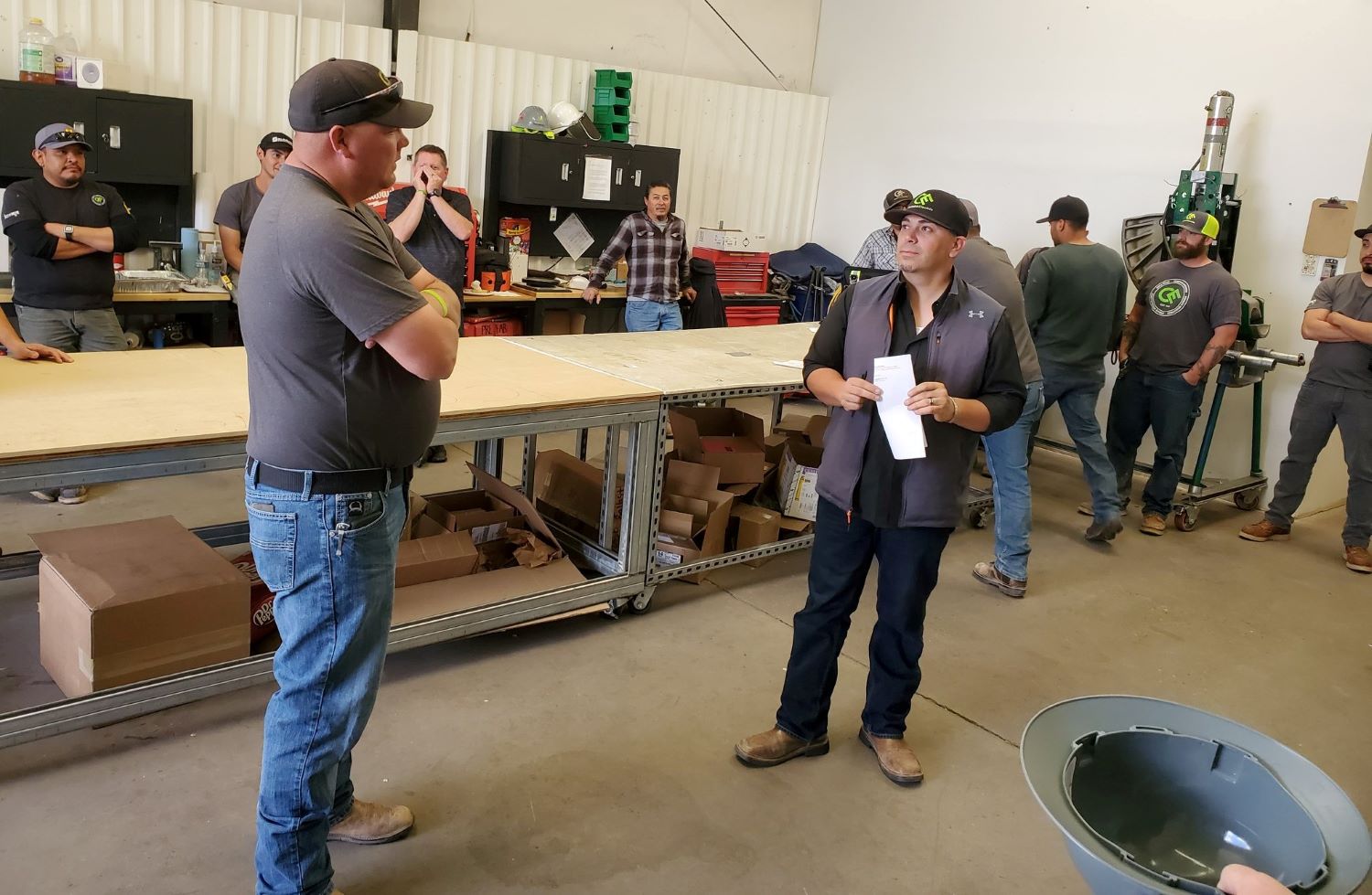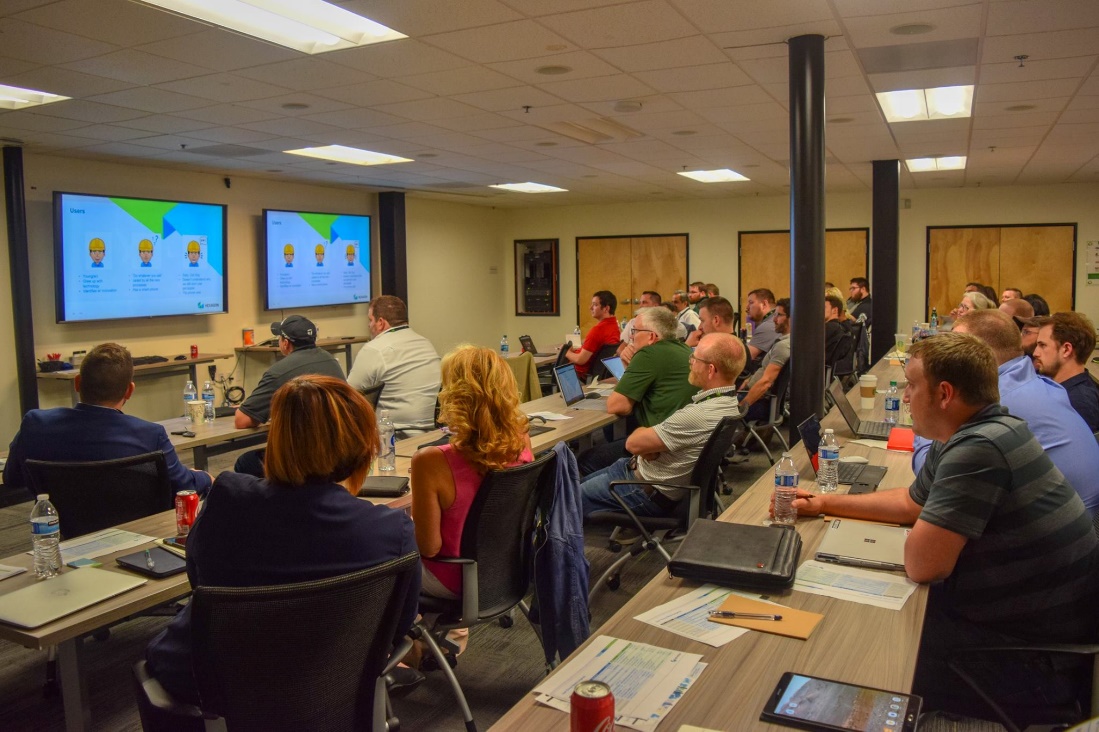Corbins Electric’s Lessons on Bleeding, Transforming and the True Form of Digitalization
Has been around since 1975, Arizona-based electrical contractor – Corbins Electric is claiming its dominant position within the Southwest area of Arizona and New Mexico markets with consecutive innovations and remarkable transformations, in the recent years.
The company now run an employee base of 783 people across all of its locations and generates around $131M in sales, according to data site Dun & Bradstreet. Between mission critical, manufacturing, industrial and service & support, the firm’s core markets are diversified to meet client’s needs. So, what sets it apart? And the fundamental changes its team is driving in training, technology and workflows.
Break Down a Vigorous Transformation
How did the firm first recognize its own operational pitfalls and the memoir on transforming into a high-tech contractor? Beyond that, in an interview with Josh Cranfill, the firm’s leaders – JD Martin and Nate Unruh talks about how their team empowered thought leaders who are boldly changing the construction industry by evolving not only how construction is done but also how people think about construction getting done!
While Martin serves as Vice President of Business Solutions of Corbins Electric, Unruh leads the Business Solutions team at NOX Innovations – a sister company of Corbins
Phase 1: Recognizing the Bleedings
In retrospect, the firm was operating around $40M in revenue a year with 200 employees – of which processes are all paper-based. “And we knew in order to grow or to scale, paper processes weren’t going to be the way to do it. We had to start digitizing.” Martin explains; however, ‘digitalizing’ is not what they think it is.
Forms, fillable PDFs, or databases in Excel – they have never been the right answer as it very quickly became unsustainable.
“Like many companies, what we did is we hired people to go manage the data and collect it somewhere else, store it, move it, analyze it, report on it, all those things, but we realized that’s unsustainable.” There was no value added for construction companies or contractors since it added a lot of costs to their overhead. They were increasing revenue but were not increasing margin at the same rate, so, how valuable is this data or these processes can be?

Aside from the fact that it consumes greater than produce efficiency on getting the right information to the right people. What is the biggest bleeding cut?
According to the Vice President, the work of ‘installing electrical material’ is not simple. It actually comes down to humans using information, tools, material, and equipment to execute a project. And the killer of this industry is ‘rework’.
“If our single focus was to help eliminate rework, it is going to be a win for us. We do not want to do the work twice, we certainly do not want to install material twice, we do not want to order twice the material, and we do not want to have twice the labor rate. All of those things dig into our ability to make money, which ultimately affects how people earn a living in our business.” Martin addresses.
That is when the ultimate definition of ‘digital transformation’ came to the team’s mind. In general, it is the integration of technology in all areas of the business, it has to truly evolve your operation by creating new lines of business, revenue streams, and especially cultural implications. And in Corbins’s case, it’s a new way of bringing value to the customers and the company by focusing on increasing the efficiency and effectiveness of project teams or, in other words, ‘digital transformation’ should enable them to sink material, labor, and other costs of installing so they can increase profit margin. “If you do that enough times, you will have a business that has a profit.”
Phase 2: The Inception of ‘Digitalizing’
How does the Corbins team execute their idea of digital transformation? What is the exact problem it helps solving and the framework in real practices?
With digital transformation, you have things like workflow, database, reminders, scorecards, or the ERP accounting system. However, Martin says his team has always wanted more information. They want to define and standardize frameworks like insulation, conduit, or conduit versus.
“We would even break down a small conduit from the big conduit, PVC from steel, things like that, because we wanted to know what parts of our business, we were missing the mark on, right? Estimation versus installation actuals. And the ERP doesn’t capture that!” He addresses the system only captures how much labor and material cost firms put into a project, how much money they billed for or came in. In brief, it lacks the information they needed for better strategic planning.
Therefore, their digital transformation ended up being: First, the team started defining the information they wanted to gather. Second, they gather data, analyze it visually, and represent it with filters. Lastly, they use it for business decision-making and making real impacts with just little and fragmented pieces of information.
“It drives the leading indicators for the next thing that we’re going to go do. To summarize that up, the way I see digital transformation is digitalization with a purpose.” Unruh stresses.
What is the point of rolling out an application that does the exact same thing as your old process and does not bring about any real outcomes besides putting numbers on the screen? If you are seeing the same outcomes as it has not solved any efficiency issues, he says, you are not making impacts and people will get lost pretty quick since its application does not affect how they work or the end result.
Phase 3: The Two Impacts

At Corbins, this transformation gives rise to two major impacts of tangible and intangible.
With the tangible, the vice president says, scalability is the most obvious influence his team experiences.
“We obviously have scaled up as a company very quickly, and we owe a lot of that to our ability to continuously improve and look at our processes and understand where they’re going to break.”
Like most companies, Corbins has its own scaling challenge, and a lot of times scaling does not always equal an increase in revenue, not to mention an increase in profit. This new framework has given the team extreme clarity on what they are after and helps monitor responses accordingly.
On the intangible side, it comes down to how people are inspired and empowered to make changes. Especially, when teams want to do differently, they will have the data to back up those decisions as well as understand at a core level why they are doing business this way. That, the vice president addresses, also helps keep the culture consistent for how people believe in the direction they are going.
“We don’t tie ourselves down into this sunk cost fallacy of spending too much time building a relationship with this customer or building up our people and skills to do this type of work. If it is not a winner, we must move on.”
More importantly, is the change the firm sees in its frontline workers. People from the field who actually do the work of installing the material, by the end of the day, wanted to feel productive. They do not want to be standing around waiting for materials or information and just go home. On the other hand, people from the back office do not want to cause problems for the job sites. There is a huge cultural implication of being efficient across the company and the digital transformation has helped a lot in pursuing such quality.
Phase 4: Bringing It to the Masses
On bringing their secret sauce to the masses, Corbins Electric comes up with NOX Innovations. NOX is Corbin’s sister company that offers different solutions to construction customers from technology consulting to fabrication and mobility. In brief, while Corbins does construction, together they do contracting as NOX offers services and products that Corbins uses, and other contractors need.
“We have been on the bleeding edge of digital transformation in the form of building apps and workflows, gathering and analyzing data. It was worth it to us, and I certainly wouldn’t want other contractors to have to reinvent the wheel, right? That’s part of the reasons why we spun off NOX is to provide services and products to other contractors and help them accelerate their own business.”
According to the vice president, the only way for his firm to go forward is to go along with the entire industry. As an electric specialty, there is no good gobble up all the market share without the mechanical, pipping and steel guys being able to scale and join in the process. Because there is no project that is a hundred percent electrical.
On top of that, the fact that Martin and Unruh being able to ‘teach’ others their solution would help them understand and soon master the problem even more profoundly.
“And we’ve seen that over and over again where we think we’re teaching somebody a solution and all of a sudden, we got more out of it than what we are actually teaching.” Whether you are learning or copying from peer groups or networking opportunities that really is the best way to go forward. Because regardless of industry, working in a silo is not how you grow – especially without other people testing, challenging, and expanding your ideas.
Redefining Leadership and Standards

Recently on an interview with Construction Global, the company’s President and CEO Justin Martin brings in his in-depth on leading and the firm’s commitment walking into new phrases.
According to the president, the stigma on millennials – of how they are treated or developed are proofs of the lack of good leadership. For how he hires and intentionally developed them, their contributions have continued to propel the firm’s operation forward. Especially with 40 percent of the electrical workforce slated to retire over the next 10 years, becoming more tech-savvy is a strategy the firm opt combating this demographic challenge. “We are really committed to the success of each other and the functions and departments – there’s a lot of alignment in that. It’s hard to grow a company to more than 600 people and have all the leadership going in the same direction. That wouldn’t have even happened if we didn’t have a leadership team that was completely aligned and bought into each other with that level of trust.” Martin addresses.
While Corbins is a Phoenix-based firm, Martin comments on an interview with the Arizona Builder Alliance, from his perspective things are looking positive for the foreseeable future within the area. Maricopa County has been reported to be one of the fastest-growing counties as large technology and mission-critical owners are aiming at the state for their projects. “I believe the diversity of economic drivers that have created this demand will help sustain it for several years.”
The business climate in Arizona for builders, he says, is quite pro-business including reasonable legislation and programs that impact contractors as well as are attractive to business owners to the state who have construction needs. “I believe the diversity of economic drivers that have created this demand will help sustain it for several years.”
The Bottom Lines
Through rethinking corporate culture and operational standards, the firm takes pride in bleeding and venturing far with transformations. Not just on the surface, Corbins team has made their bold statement on refining fundamentally how construction should be done – and so far, its sister company NOX is solid evidence for the effort.









